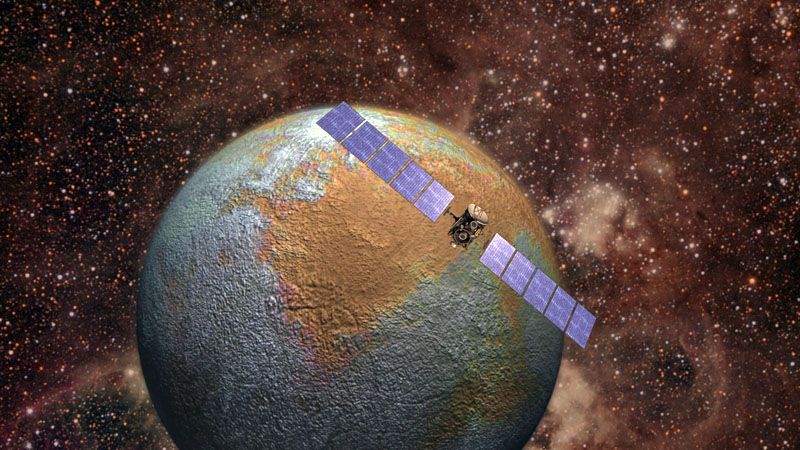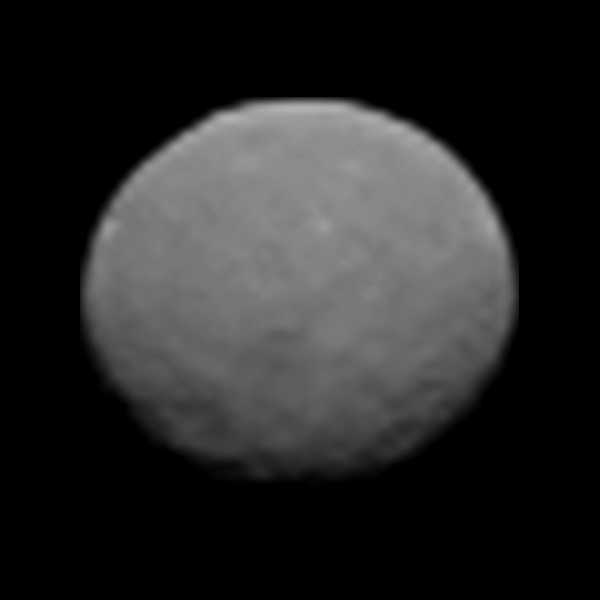
On March 6, NASA’s Dawn will become the first spacecraft to encounter a dwarf planet when it arrives at Ceres, the first (and largest) object discovered in the Main Asteroid Belt between the orbits of Mars and Jupiter.
In January, NASA released these images of Ceres, pictures that clearly show its round and planet-like shape, and even some surface features. The pictures were taken from a distance of 147,000 miles, a little more than half the distance from the Earth to the Moon.
On February 4, from a distance of 90,000 miles, Dawn took a series of images that were made into an animation with the best resolution yet: 8.5 miles per pixel.
Ceres holds a lot of mysteries for us. For the better part of the two centuries since its discovery in 1801, we knew little more than its approximate size (590 miles in diameter), and only recently its generally spherical shape. Until recent observations by the Hubble Space Telescope, Ceres appeared through telescopes as little more than a blurry smudge.
These new clues are tantalizing. Ceres appears to be composed of a rocky core surrounded by an icy mantle, and has been observed to exude gases into space, not unlike comets do as they approach the sun. It has even been speculated that Ceres could possess a sub-surface ocean of liquid water. Far from being a sterile, dry mountain of rock, as most asteroids are envisioned, Ceres has already exhibited some planet-like, or at least dwarf-planet-like, characteristics.

What makes Ceres a dwarf planet and not just a very large asteroid, as it was classified for decades prior to the 2006 creation of the dwarf planet classification?
